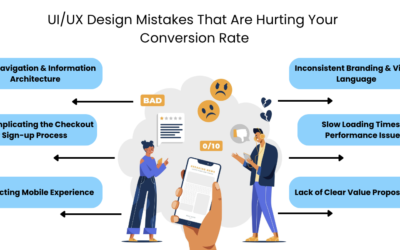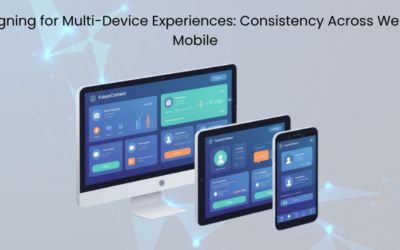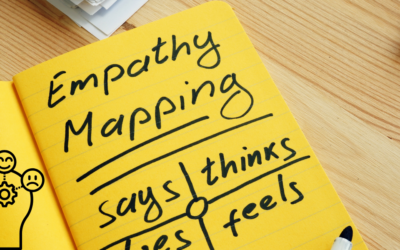Imagine this:
You’ve just launched a sleek new fitness app. It’s got all the bells and whistles—modern design, intuitive navigation, and cutting-edge features. But within weeks, user engagement plummets. Reviews highlight confusion, difficulty in navigation, and unmet expectations.
What went wrong?
This scenario underscores the critical interplay between UX research and design thinking. Let’s explore how these two disciplines collaborate to create products that not only look good but also resonate with users.
A Quick Recap on UX Research
We’ve previously delved deep into the nuances of UX research in our guide: What is UX Research & Why It’s Beyond Usability Testing?. In essence, UX research involves understanding user behaviors, needs, and motivations through various methods like interviews, surveys, and usability testing. It’s the foundation upon which user-centric designs are built.
Understanding Design Thinking
Design thinking is a problem-solving approach that prioritizes the user’s needs. It involves five key stages:
- Empathize: Understand the user’s experiences and motivations.
- Define: Clearly articulate the problem to be solved.
- Ideate: Brainstorm a range of creative solutions.
- Prototype: Build tangible representations of ideas.
- Test: Gather feedback to refine solutions.
At its core, design thinking is about putting the user first, ensuring that solutions are tailored to real needs.
The Synergy Between UX Research and Design Thinking
Consider this: You’re developing a meditation app aimed at beginners.
- Empathize: Through user experience research, you discover that many novices feel overwhelmed by lengthy sessions.
- Define: The problem becomes clear—users need quick, accessible meditation options.
- Ideate: Brainstorm features like 5-minute sessions or guided breathing exercises.
- Prototype: Develop a basic version of the app incorporating these features.
- Test: Use usability testing to gather feedback, leading to iterative improvements.
This collaborative process ensures that the final product aligns with user expectations and needs.

Real-World Success Stories
Google employs design sprints—a condensed version of design thinking—to rapidly prototype and test ideas. This approach has been instrumental in developing user-centric products efficiently. For instance, the dating app Happn used a Google Design Sprint to increase user engagement by introducing new features that encouraged interactions between users.
Airbnb
Facing stagnation, Airbnb’s founders used UX research to identify that low-quality photos were deterring users. By improving visuals and focusing on user needs, they transformed the platform into a hospitality giant. Learn how design thinking transformed Airbnb.
IBM
IBM’s adoption of design thinking led to remarkable results: a 75% increase in efficiencies and over 300% ROI. By centering on user outcomes, they streamlined processes and enhanced product relevance. Explore IBM’s design thinking impact.
How UX Prosperar Can Elevate Your Product
Understanding the synergy between UX research and design thinking is one thing; implementing it effectively is another. That’s where UX Prosperar comes in.
We specialize in:
- Conducting comprehensive user experience research to uncover genuine user needs.
- Applying design thinking methodologies to develop solutions that resonate.
- Integrating UX design and research seamlessly to create intuitive, user-friendly products.
By partnering with us, you ensure that your product is not only functional but also deeply aligned with user expectations.
Ready to Transform Your Product?
Don’t let assumptions dictate your product’s success. Embrace the power of UX research and design thinking to create solutions that truly connect with users.
Reach out to UX Prosperar today, let’s craft experiences that users love.






